The process of luring in and turning prospective business clients into paying customers for a B2B (business-to-business) company is known as B2B customer acquisition. To attract and engage potential customers, this process entails determining target markets, developing a sales plan, and putting various strategies into practice.
In today’s cutthroat business environment, understanding the science underlying B2B customer acquisition is essential for success. Organizations can develop a strong and efficient B2B customer acquisition strategy that foster growth and boost revenue by utilizing data-driven insights and client psychology. A comprehensive grasp of the customer acquisition process can also assist businesses in pinpointing areas for development, streamlining their sales and marketing initiatives, and eventually boosting return on investment.
What Works in B2B Customer Acquisition
All firm must constantly seek out new clients, but it is more important in the B2B market where the success of the enterprise can be greatly impacted by the development and maintenance of strong client relationships. Here are a few crucial tactics that have worked:
Inbound Marketing Strategies
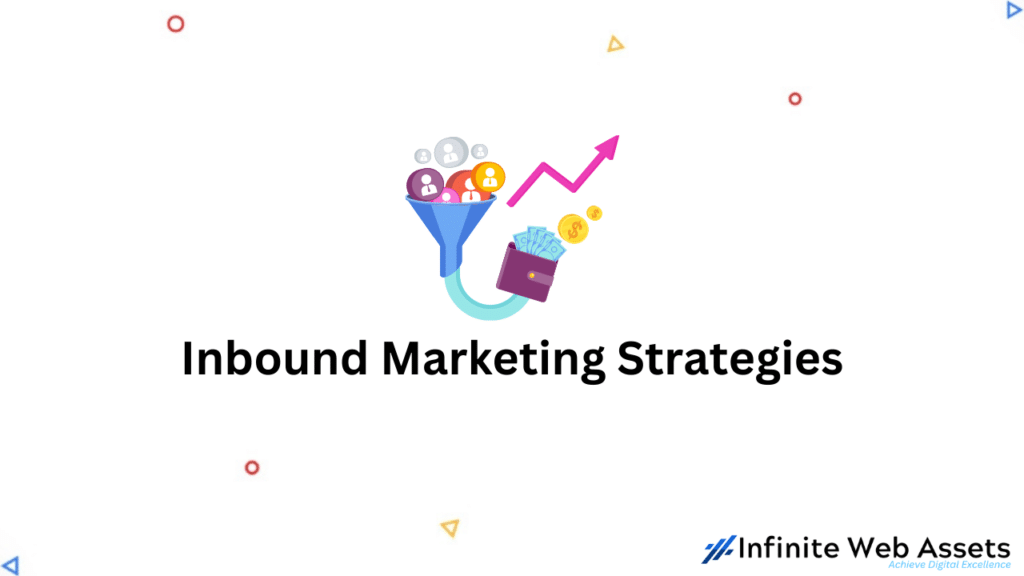
By offering customers useful material and experiences that speak to their wants and interests, inbound marketing is a deliberate method for luring them in, keeping them interested, and gratifying them. As companies explore for more efficient and cost-effective ways to connect and engage their target audience, inbound marketing is growing in popularity in B2B customer acquisition. Three of the best inbound marketing techniques for acquiring B2B clients are covered in this section:
- Content Marketing: In order to attract and keep a clearly defined audience and eventually to motivate lucrative customer action, content marketing involves the creation and dissemination of valuable, pertinent, and consistent material. Among the many formats that content marketing can take are blog posts, eBooks, infographics, films, webinars, and more. The purpose of content marketing is to generate trust and credibility with your target audience by educating and informing them, establishing your brand as a thought leader in your sector.
Content marketing can be utilized to address the unique problems and difficulties your target audience faces in acquiring B2B customers. Your target audience may make better decisions and grow their businesses if you give them useful information and insights. Increased brand visibility, engagement, and ultimately sales, can result from this. - Search Engine Optimization: The process of improving your website’s content and search engine rankings (SERPs) for pertinent keywords and phrases is known as search engine optimization (SEO). The purpose of SEO is to increase organic website traffic and make it simpler for potential clients to locate your company when they are looking for goods or services similar to what you offer.
SEO can be a useful tool for reaching and interacting with your target audience in B2B customer acquisition. You may increase the exposure of your website and attract more relevant traffic to it by producing high-quality, relevant content and optimizing it for search engines. By doing this, you may increase consumer awareness of your brand, position your company as an authority in its field, and eventually drive leads and sales. - Social Media Marketing: Using social media channels to communicate with your target audience and promote your brand, goods, or services is known as social media marketing. Social media sites like LinkedIn, Twitter, and Facebook are effective tools for acquiring B2B clients because they let you connect and interact with your target market where they already hang out.
Social media marketing for B2B client acquisition may be used to forge connections with your target market, position your company as a thought leader in your sector, and generate leads for your website. You may establish credibility and trust with your target audience while interacting with them, which will ultimately increase sales.
Personalized Outreach
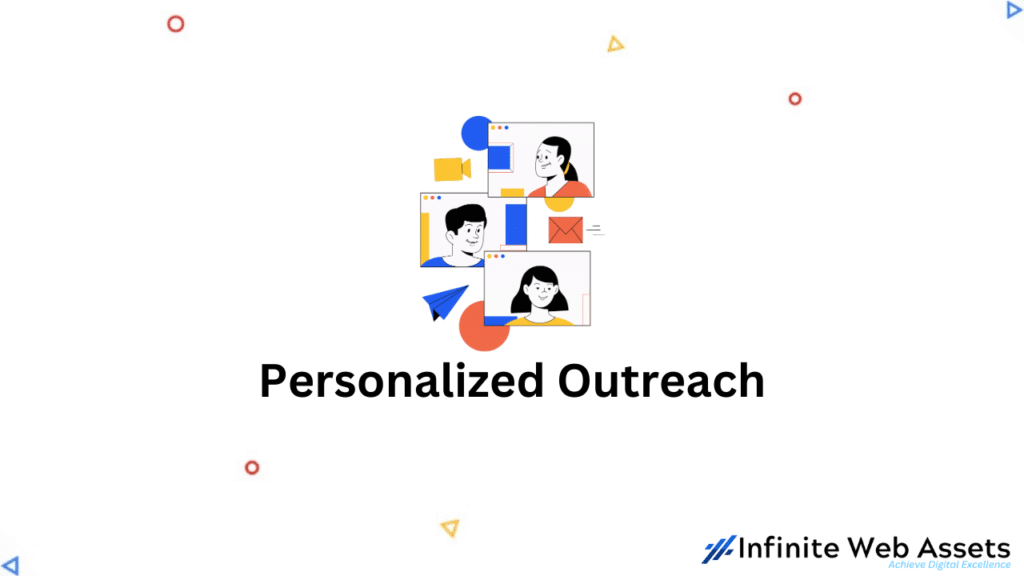
The process of reaching out to individuals or groups of people with tailored messages, offers, or communication in order to build a relationship, encourage involvement, and accomplish particular goals is known as personalized outreach. Personalized outreach is a powerful marketing tactic that businesses may use to boost brand recognition, cultivate customer loyalty, and generate leads and sales.
1. Email Campaigns: Sending tailored emails to a large number of individuals is a cost-effective and successful approach to communicate. An email campaign’s main objective is to engage the receiver and persuade them to perform a particular action, such buying something, completing a form, or going to a website. It is crucial to make sure the message is interesting, current, and relevant to the receiver in order for an email campaign to be successful.
The ability to send highly focused messaging is one of the major advantages of email campaigns. Businesses can divide their email lists into segments based on demographics, historical behavior, and preferences, and then deliver each section highly relevant communications. The open rates, click-through rates, and conversion rates can all be improved with this level of personalisation.
Email campaigns also have the advantage of being easily automated, which saves time and work while still ensuring that each recipient receives a tailored message. Marketing automation technologies can be used by businesses to track the success of their campaigns, send follow-up emails, and trigger emails in response to certain events.
2. Direct Mail Campaigns: Direct mail campaigns are a sort of tailored outreach that entails sending physical mail to a specific audience of people. Many other types of goods, including brochures, flyers, postcards, and parcels, can be sent by direct mail. Direct mail, which costs more up front than email advertising, can be a good method to leave a lasting impression and encourage participation.
Direct mail campaigns have the advantage of allowing for more innovative and powerful messaging, which is one of their main advantages. High-quality photographs, graphics, and text can be used to create direct mail pieces that will make a strong impact on the receiver. Direct mail can also be more physical and memorable than digital communications, which can support an improvement in brand recall and recognition.
Direct mail initiatives can provide the opportunity for highly focused communications. Businesses can choose the precise people or homes they want to reach using demographic and behavioral data, and then send tailored communications that are pertinent to each group. This degree of personalization can promote engagement and boost response rates.
3. Referral Programs: A sort of tailored outreach, referral programs reward existing consumers for introducing new clients to a business. By encouraging pleased customers to tell their friends, family, and network about a company’s goods and services, referral programs aim to capitalize on the influence of word-of-mouth advertising.
The ability of referral programs to effectively drive the acquisition of new customers is one of its main advantages. One of the most reliable sources of information are recommendations from friends and family. These recommendations may also be an effective approach to raise brand awareness, attract new leads, and increase sales.
Referral schemes also have the advantage of being very cost-efficient. Companies can lower their acquisition costs and grow their client base without spending as much on advertising and marketing by rewarding current customers who recommend new customers.
Data-Driven Approach
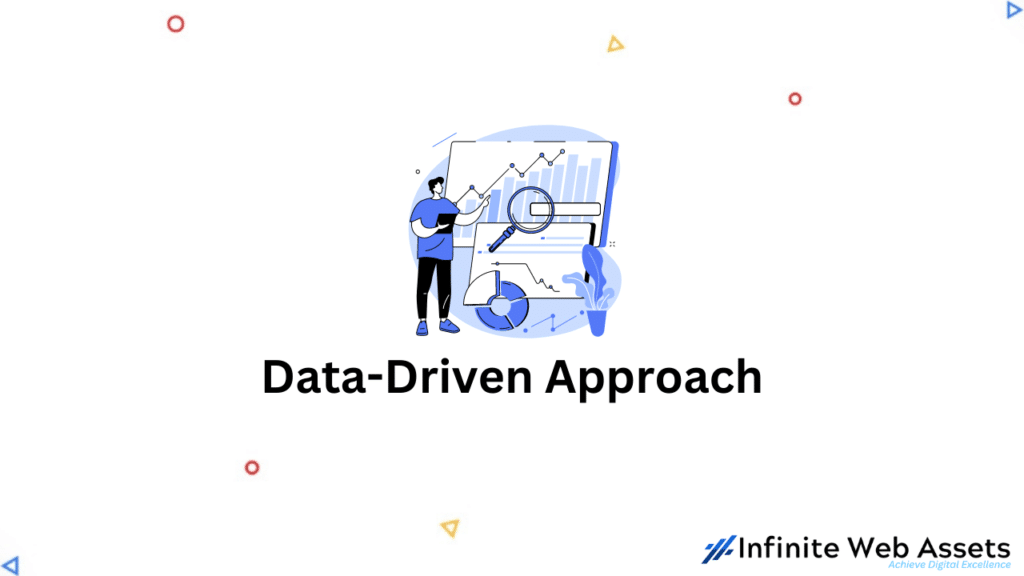
The term “data-driven approach” refers to the use of statistics and data to inform decisions and address business issues. The concept behind this strategy is to use data and insights to guide and enhance corporate operations, producing better results and greater efficiency.
Customer Segmentation: Customer segmentation is the process of breaking down a client base into more manageable groupings of people who share similar requirements or traits. This procedure is crucial because it enables businesses to focus their marketing, sales, and customer support activities on particular consumer groups, producing results that are more successful and efficient.
Customer segmentation can be done using a variety of techniques, such as geographic, behavioral, psychographic, and demographic segmentation. Customers are divided via demographic segmentation according to factors including age, gender, income, education, and employment. Customers are divided via psychographic segmentation according to their values, beliefs, attitudes, and lifestyle. Based on factors like brand loyalty and frequency of purchases, behavioral segmentation divides customers into groups. Customers are divided depending on their geographic location, including their region, climate, and population density.
Companies can build tailored marketing efforts, product offerings, and pricing strategies that are more likely to resonate with each segment by employing customer segmentation to better understand their customers.
Lead Scoring: Lead scoring is the process of rating leads, or potential consumers, according to how likely they are to become paying clients. This rating is determined by a number of factors, including demographic data, participation in the company’s marketing initiatives, and internet activity. Prioritizing leads is the aim of lead scoring, which enables sales teams to concentrate their attention on the most promising prospects.
By identifying the leads that are most likely to become customers, lead scoring enables businesses to increase the effectiveness of their sales and marketing initiatives. Additionally, it ensures that costly resources are not squandered on prospects with low chances of becoming clients.
Both manual and automated methods and algorithms can be used for lead scoring. Automatic lead scoring analyzes a lot of data and forecasts how likely it is that a lead will become a customer using machine learning algorithms. In comparison to manual lead grading, this method is quicker, more precise, and less subjective.
Predictive Analytics: Using data, statistical algorithms, and machine learning approaches, predictive analytics determines the likelihood of future outcomes based on historical data. A wide range of business outcomes, including consumer behavior, the success of marketing campaigns, and credit risk, can be predicted using predictive analytics.
By leveraging data to find trends, patterns, and links in massive amounts of data, predictive analytics gives businesses the capacity to make wise judgments. This knowledge can then be applied to forecast future events, such as which customers are most likely to purchase a product or which marketing initiatives are most likely to be successful.
Predictive analytics use a variety of techniques, such as regression analysis, decision trees, and neural networks. To determine the relationship between a dependent variable and one or more independent variables, regression analysis is performed. Predictions are made using decision trees, which divide an issue into smaller, more manageable chunks. To simulate intricate interactions between variables, neural networks are used.
What Doesn’t Work in B2B Customer Acquisition
Not all B2B client acquisition approaches and strategies are equally successful. Let’s go through what fails when trying to attract B2B clients and why.
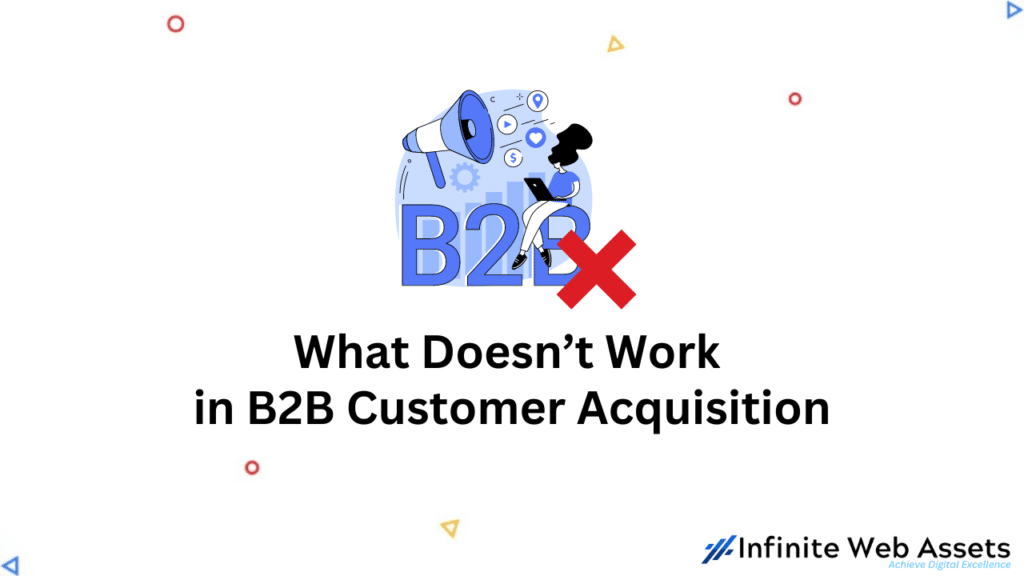
Outdated Tactics
Marketing and sales techniques that were once popular but are no longer effective in the current business environment are referred to as outdated tactics. These strategies may have worked in the past, but they are no longer effective due to technological improvements and changes in consumer behavior. Cold phoning, bulk emailing, and radio advertising are examples of outdated strategies. For their company to effectively connect and interact with potential clients, firms must stay current on the most recent marketing and sales techniques.
- Cold calling: Cold calling is the practice of making telemarketing calls to prospective consumers without their consent in an effort to close a sale. Since cold calling is frequently perceived as intrusive and annoying by potential clients, it is one of the B2B customer acquisition strategies that is regarded to be the least effective. However, cold calling is no longer as effective in reaching and engaging potential consumers due to the rise of new technologies like online communication and automation.
- Mass email campaigns: Campaigns using mass emails entail sending the same email to a lot of potential clients. Potential clients may disregard or delete the email without reading it if it uses this strategy because they may perceive it as spammy and impersonal. Effective B2B customer acquisition requires a targeted, individualized strategy that considers the unique requirements and problems faced by each prospective client.
- Broadcast advertising: To reach a big audience, traditional advertising techniques like radio and television commercials are used. While broadcast advertising can be useful in sectors that cater to consumers, it is typically ineffective for attracting B2B clients. This is so because, in general, B2B customers are more interested in specific, pertinent information about a product or service than in messages that are broad and generic.
Lack of Focus on Customer Needs and Pain Points
It is critical to concentrate on the requirements and problems that potential clients may be experiencing if B2B customer acquisition is to be effective. This entails comprehending the problems they face specifically and creating ways to deal with them. Potential clients may get disinterested or disengaged if you do not pay attention to their requirements and problems since they will not see the value in your product or service.
Neglecting the Customer Journey
The term “customer journey” describes the series of actions a consumer takes to complete a transaction, from first becoming aware of a product or service to ultimately deciding to make a purchase. Without understanding the customer’s needs and pain areas, neglecting the customer journey might result in unproductive marketing and sales strategies. To create a focused and successful B2B client acquisition strategy, it is crucial to map out the customer journey and comprehend each phase.
The Future of B2B Customer Acquisition
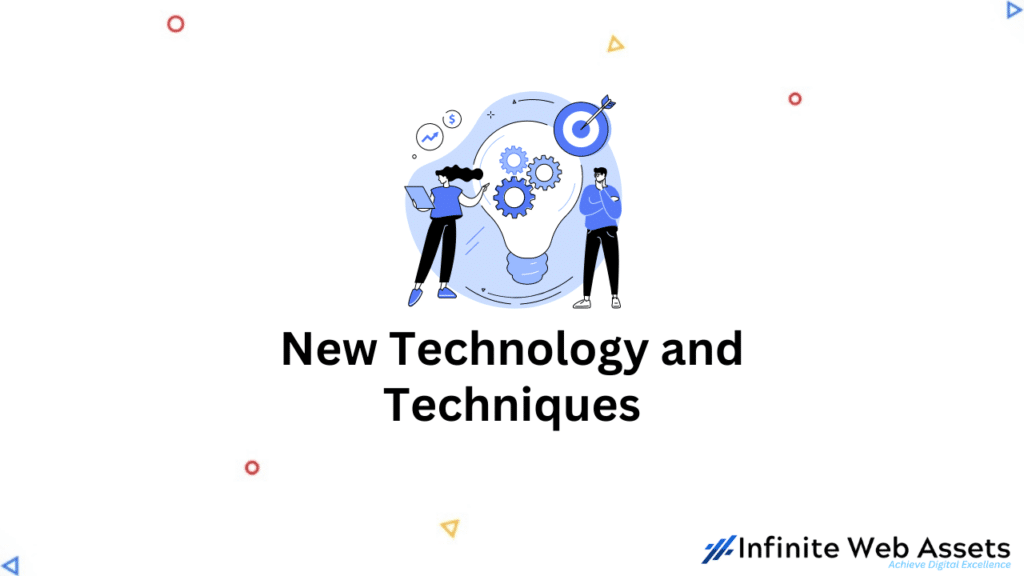
With the emergence of new technology and techniques, the future of B2B client acquisition is rapidly changing. Businesses must be proactive in adjusting to these changes to stay ahead of the competition, from the advent of account-based marketing to the growing significance of the customer experience. The way that businesses handle lead generation and consumer engagement is changing as a result of the integration of artificial intelligence and machine learning. Businesses who adopt these trends will be best positioned for success in the future as the business landscape continues to evolve.
Artificial Intelligence and Machine Learning
Two of the most significant recent technology developments are machine learning (ML) and artificial intelligence (AI). They are changing how companies run and interact with their customers. The B2B client acquisition process has the potential to be transformed by AI and ML by making it more effective, individualized, and data-driven.
Automating lead generation and qualification processes is one of the main advantages of AI and ML in B2B client acquisition. Businesses can identify prospective clients who are more likely to make a purchase by employing algorithms and predictive analytics. This increases the overall effectiveness of the sales process and decreases the time and resources used to contact unqualified leads.
The potential to offer a more individualized client experience is another important advantage of AI and ML in B2B customer acquisition. AI and ML can assist firms in customizing their communication and outreach tactics to each individual client by examining customer data and behavior. This not only increases customer happiness and engagement but also increases the likelihood that leads will be turned into sales.
The Rise of Account-Based Marketing
Account-Based Marketing (ABM) is a focused, tailored strategy for acquiring B2B clients that places more emphasis on engaging particular accounts than on lone leads. ABM seeks to increase revenue by cultivating connections with important decision-makers within a target client.
ABM is becoming more and more common in B2B client acquisition as it acknowledges that big business negotiations frequently involve numerous stakeholders and decision-makers. ABM assists companies in forging closer ties with their most important clients and raising the likelihood of contract closure by employing a comprehensive and coordinated strategy to account engagement.
The capability of ABM to customize the client experience is one of its main advantages. Businesses can adapt their outreach and communication efforts to the particular requirements and preferences of each target account by concentrating on specific accounts with ABM. This increases the likelihood of turning leads into sales in addition to aiding in the development of deeper relationships with important accounts.
The Importance of Customer Experience
The quality of the customer experience has emerged as a key distinction for companies in the modern, cutthroat business environment. The process of acquiring B2B clients is no exception, as customers are now more inclined to select a company that offers a pleasurable and straightforward experience over one that does not.
Increased client loyalty and retention are two important advantages of a good customer experience. Businesses may strengthen their ties with their clients and boost the likelihood of repeat business by offering a seamless and customized experience. This lowers the price of recruiting new clients while also assisting in the increase of income.
Improved brand reputation and client advocacy are two more important advantages of a good customer experience. Businesses can boost customer satisfaction and encourage customers to promote their brands by giving them a good experience. This helps to generate new business by encouraging brand advocates.
On a Final Note
B2B customer acquisition science is a complicated and dynamic field. Since every firm faces a different mix of possibilities and problems, there is no one formula that works for all businesses. Yet, businesses may make wise choices about how to gain and retain consumers by knowing the crucial elements that affect B2B client acquisition, such as target audience, value proposition, and marketing channels. As what works today could not be as effective tomorrow, it is crucial to continually assess the effectiveness of client acquisition techniques and make improvements as necessary. In the end, a combination of research, experimentation, and a thorough understanding of the customer is the secret to effective B2B customer acquisition.
Frequently Asked Questions by Clients
About B2B customer acquisition approach, we are frequently questioned. It is an essential component of every company hoping to develop and broaden its clientele. The most frequent inquiries from our clients include the following:
What is a B2B customer acquisition strategy and why is it important?
The method and techniques a business employs to draw in and win over new business clients are referred to as its B2B customer acquisition strategy. It is essential since growing the customer base and generating more money both depend heavily on recruiting new commercial clients. A successful B2B client acquisition strategy can assist businesses in reaching their target market, standing out from rivals, and eventually closing more agreements.
How can we effectively target our ideal B2B customers?
Companies can use strategies like market segmentation, buyer personas, and lead scoring to successfully target suitable B2B clients. By separating the market into smaller groups of consumers with comparable demands and traits, market segmentation is accomplished. Buyer personas are fictitious depictions of the ideal customer based on consumer and market research. Lead scoring entails putting a number on each lead depending on how engaged they are and how well they suit the target market.
How can we measure the success of our customer acquisition efforts?
Tracking important indicators like customer acquisition cost (CAC), return on investment (ROI), and customer lifetime value can be used to evaluate the performance of customer acquisition strategies (CLV). Whereas ROI gauges the return on investment for customer acquisition activities, CAC gauges the cost of obtaining a new customer. The overall value a client contributes to a business during their lifetime is measured by CLV.
How can we improve our lead generation process?
Lead nurturing, lead capture form optimization, and the use of marketing automation tools can all be used to enhance the lead creation process. To move leads closer to making a purchase decision, lead nurturing entails maintaining contact with leads through a succession of targeted and tailored communications. Enhancing lead capture forms can aid in boosting the rate at which website visits become leads. Processes for lead creation and nurturing can be automated and streamlined with the use of marketing automation solutions.
How can we differentiate ourselves from our competitors in terms of customer acquisition?
By concentrating on the distinctive value proposition, developing a powerful brand, and providing great customer service, businesses can differentiate themselves from rivals in terms of customer acquisition. The company’s differentiators from rivals and reasons why clients should select their solution should be highlighted in the unique value proposition. Developing a strong brand can aid in gaining the credibility and trust of potential clients. Providing great customer service can increase client loyalty and promote word-of-mouth recommendations.
How can we build and maintain relationships with B2B customers?
It is possible to develop and maintain relationships with B2B clients by communicating clearly and frequently, offering outstanding customer service, tailoring solutions, and fostering trust via openness and candor. Also, regular check-ins and getting feedback can support a healthy connection.
How can our company use data and analytics to inform our B2B customer acquisition strategy?
A B2B customer acquisition strategy can benefit from data and analytics by learning more about the target client categories, their buying habits, and preferences. Targeted marketing and sales efforts can be informed by this data, and the effectiveness of such efforts can be evaluated.
What are some common challenges that companies face in their B2B customer acquisition efforts, and how can they overcome them?
Long sales cycles, difficult decision-making procedures, and intense competition are some typical obstacles in B2B customer acquisition. By developing a strong network of contacts in the industry, having a distinct value proposition, and providing standout goods and services, these difficulties can be addressed.
How can we ensure that our B2B customer acquisition strategy is aligned with our overall business goals and objectives?
It is necessary to continuously assess and modify the B2B customer acquisition plan to make sure it is in accordance with the company’s direction and priorities. This will enable the strategy to be aligned with overall business goals and objectives. It is crucial to involve essential parties from various departments and to frequently update the organization on the plan.
What are the benefits of investing in a multi-channel B2B customer acquisition strategy?
A multi-channel B2B customer acquisition strategy has many advantages, including better client engagement, expanded audience reach, and elevated brand awareness. Also, it offers the chance to test and improve several channels to determine which ones are the most successful, resulting in a more effective use of resources.

